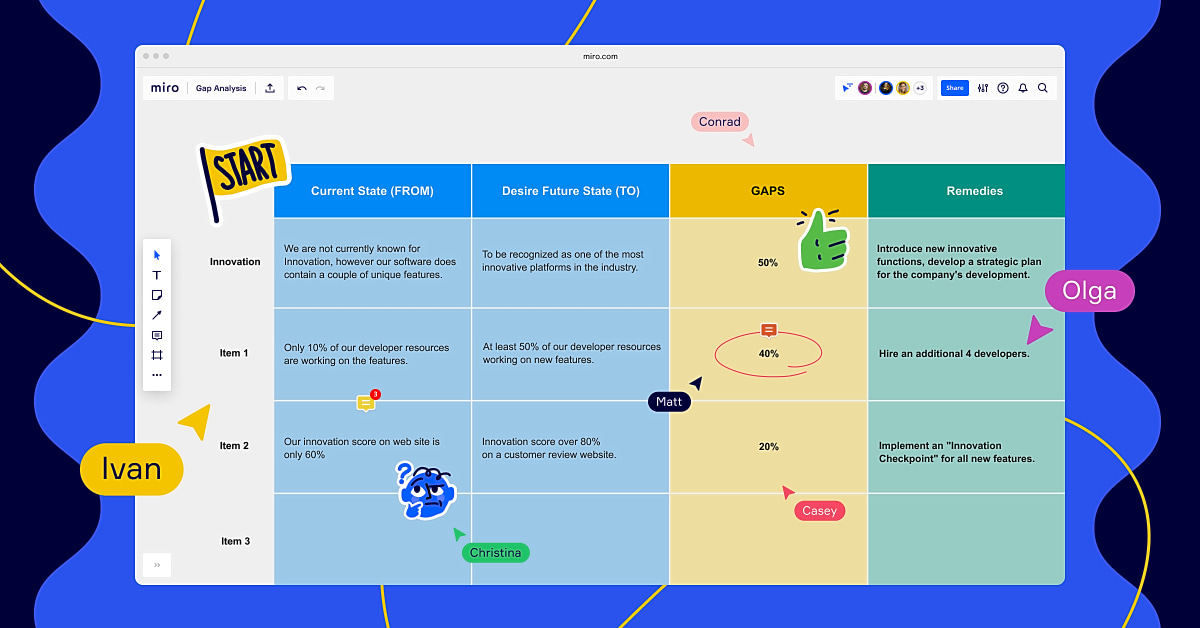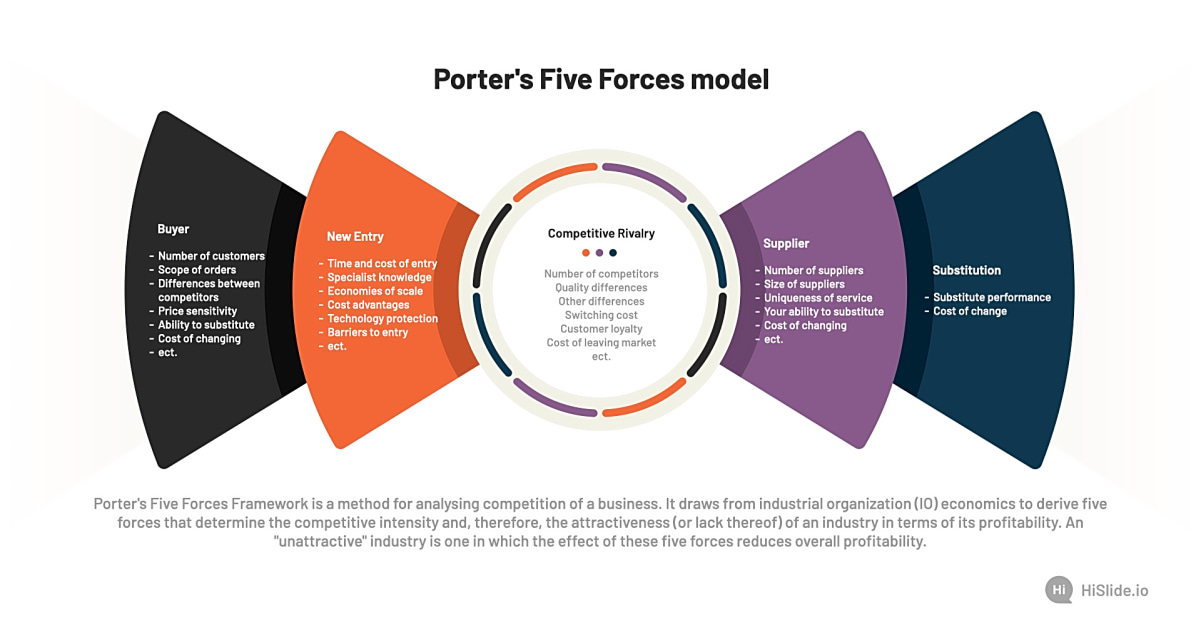Welcome to our comprehensive guide on how to use Porter’s Five Forces in SWOT Analysis. If you’re new to the world of strategic planning, you may have come across the terms SWOT Analysis and Porter’s Five Forces. Both are powerful tools that can help businesses gain a competitive advantage and make informed decisions. In this article, we’ll dive into the world of Porter’s Five Forces and how it can be used in conjunction with SWOT Analysis to create a powerful strategic plan. Whether you’re a beginner or an experienced professional, this guide will provide you with a deep understanding of how to effectively use Porter’s Five Forces in SWOT Analysis. So, let’s get started and unlock the potential of these two essential frameworks for strategic planning.
SWOT analysis is a powerful tool used by businesses to gain a better understanding of their internal and external environment. It stands for Strengths, Weaknesses, Opportunities, and Threats. By examining these four factors, companies can develop effective strategies that leverage their strengths and address their weaknesses while taking advantage of opportunities and mitigating threats. In this article, we will dive into the world of SWOT analysis and explore how to use Porter’s Five Forces in conjunction with it to take your business to the next level.
Porter’s Five Forces is a framework developed by Harvard Business School professor, Michael E. Porter. It is used to analyze the competitive forces within an industry and understand the overall attractiveness of that industry. The five forces include the threat of new entrants, bargaining power of suppliers, bargaining power of buyers, threat of substitutes, and rivalry among existing competitors. By using this framework, businesses can gain valuable insights into their external environment and make informed decisions.
Now, let’s dive into how to use Porter’s Five Forces in SWOT analysis. The first step is to conduct a thorough SWOT analysis for your business. This includes identifying your company’s strengths and weaknesses, as well as any potential opportunities and threats in your industry.
Once you have completed your SWOT analysis, you can then use Porter’s Five Forces to dive deeper into your external environment. Start by examining the threat of new entrants – is it easy for new companies to enter your industry? Are there any barriers to entry? This will help you understand the level of competition in your market.
The next force to consider is the bargaining power of suppliers. Do you have a few key suppliers that hold a lot of power over your business? Are there alternative suppliers available? Understanding this will help you mitigate any potential risks in your supply chain.
The bargaining power of buyers is another important factor to consider. Do you have a few key customers that contribute a significant portion of your revenue? Are there many competitors in your industry? By understanding the power dynamics between buyers and sellers, you can make informed decisions about pricing and marketing strategies.
The threat of substitutes is another crucial aspect to consider. Are there alternative products or services that could replace yours? How easy is it for customers to switch to these substitutes? By understanding the potential threats to your business, you can develop strategies to retain your customer base.
Finally, analyze the rivalry among existing competitors. Who are your main competitors? What is their market share? By understanding the competitive landscape, you can identify areas where you can differentiate yourself and gain a competitive advantage.
In conclusion, SWOT analysis and Porter’s Five Forces are powerful tools that businesses can use to gain a better understanding of their internal and external environment. By leveraging these frameworks, companies can develop effective strategies that capitalize on their strengths and mitigate their weaknesses while taking advantage of opportunities and mitigating threats. So, if you want to take your business to the next level in today’s competitive landscape, make sure to incorporate SWOT analysis and Porter’s Five Forces into your strategic planning process.
Identifying Your Strengths and Weaknesses
Strengths are the internal factors that give your business a competitive advantage. These can include things like brand reputation, unique products or services, and skilled employees.
Weaknesses, on the other hand, are areas where your business may fall short. These could be poor customer service, outdated technology, or a lack of resources.
Applying Porter’s Five Forces to SWOT Analysis
To use Porter’s Five Forces in your SWOT analysis, consider how each force impacts your business. For example, if the threat of new entrants is high, this could be a weakness for your business. On the other hand, if buyer power is low, this could be a strength. Understanding these forces will help you identify areas for improvement and potential growth opportunities.
Recognizing Opportunities and Threats
In SWOT analysis, recognizing opportunities and threats is a crucial step in understanding your business’s external environment. Opportunities are external factors that can benefit your business, such as new market trends or emerging technologies. These opportunities can help your business grow and stay ahead of the competition. On the other hand, threats are external factors that could harm your business, such as competition, economic downturns, or changes in consumer behavior. By identifying these threats, you can take proactive measures to mitigate their impact on your business.
Using Porter’s Five Forces
When it comes to conducting a SWOT analysis, businesses often focus on their internal strengths and weaknesses. However, understanding the external factors that can impact your business is just as important. This is where Porter’s Five Forces comes in.
Porter’s Five Forces is a framework developed by Michael Porter that helps businesses analyze their competitive environment. It consists of five key forces: competitive rivalry, supplier power, buyer power, threat of substitutes, and threat of new entrants. By understanding these forces, businesses can develop strategies to gain a competitive advantage.
Competitive Rivalry: This force looks at the intensity of competition within your industry. This includes factors such as the number of competitors, their size and market share, and the level of differentiation in products or services.
Supplier Power: Suppliers can have a significant impact on your business if they have a strong bargaining power. This includes factors such as the number of suppliers, their size and concentration, and the availability of substitute products or services.
Buyer Power: Similarly, buyers also hold power in the market if they have a strong bargaining position. This includes factors such as the number of buyers, their size and concentration, and their ability to switch to alternative products or services.
Threat of Substitutes: This force looks at the availability of alternative products or services that can fulfill the same need as your business. The easier it is for customers to switch to substitutes, the higher the threat.
Threat of New Entrants: This force considers the ease with which new competitors can enter the market and pose a threat to existing businesses. Factors such as barriers to entry, economies of scale, and government regulations can impact the threat of new entrants.
Conducting a SWOT Analysis
When performing a SWOT analysis, it is important to consider both internal and external factors that may impact your business. Here are some key points to keep in mind:
1. Identify Your Internal Strengths and Weaknesses:
Start by analyzing your company’s internal resources, capabilities, and limitations. This includes your team, products or services, financials, and operational processes. By identifying your strengths and weaknesses, you can gain a better understanding of where your business stands in the market.
2. Identify External Opportunities and Threats:
Next, look at the external factors that may affect your business. This can include changes in the market, industry trends, competitive landscape, and regulatory or political factors. By understanding these external factors, you can better prepare for potential opportunities and mitigate any potential threats.
3. Use Porter’s Five Forces to Analyze Your Industry:
Porter’s Five Forces is a framework that helps businesses analyze their industry’s competitive dynamics. This tool considers five key forces: the threat of new entrants, bargaining power of suppliers, bargaining power of buyers, threat of substitutes, and intensity of competitive rivalry. By using this framework, you can gain a deeper understanding of the market and how your business fits into it.
4. Keep an Eye on the Overall Business Environment:
Apart from conducting a SWOT analysis, it is also important to constantly monitor the overall business environment. This includes keeping up with industry news and trends, staying informed about changes in consumer behavior, and being aware of any potential disruptions that may affect your business.
5. Use Data and Analytics to Inform Your Analysis:
When conducting a SWOT analysis, it is crucial to use data and analytics to support your findings. This can include market research, customer feedback, and financial data. By incorporating data into your analysis, you can make more informed decisions for your business.
Conclusion:
Conducting a SWOT analysis using Porter’s Five Forces can provide businesses with valuable insights into their internal and external environment. By carefully considering both factors, businesses can make more informed decisions and stay ahead of the competition.
Using Porter’s Five Forces
Porter’s Five Forces is a framework that helps businesses analyze their competitive environment. It consists of five key forces: competitive rivalry, supplier power, buyer power, threat of substitutes, and threat of new entrants.
By understanding these forces, businesses can develop strategies to gain a competitive advantage.
Applying Porter’s Five Forces to SWOT Analysis
To use Porter’s Five Forces in your SWOT analysis, consider how each force impacts your business.
For example, if the threat of new entrants is high, this could be a weakness for your business. On the other hand, if buyer power is low, this could be a strength. Understanding these forces will help you identify areas for improvement and potential growth opportunities.
Applying Porter’s Five Forces to SWOT Analysis
To use Porter’s Five Forces in your SWOT analysis, consider how each force impacts your business. For example, if the threat of new entrants is high, this could be a weakness for your business. On the other hand, if buyer power is low, this could be a strength. Understanding these forces will help you identify areas for improvement and potential growth opportunities.
Using Porter’s Five Forces
Porter’s Five Forces is a framework that helps businesses analyze their competitive environment. It consists of five key forces: competitive rivalry, supplier power, buyer power, threat of substitutes, and threat of new entrants. By understanding these forces, businesses can develop strategies to gain a competitive advantage.
In conclusion, incorporating Porter’s Five Forces into your SWOT analysis can provide valuable insights and help you develop effective strategies for your business. By considering both internal and external factors, you can gain a comprehensive understanding of your business and make informed decisions to drive growth and success.

